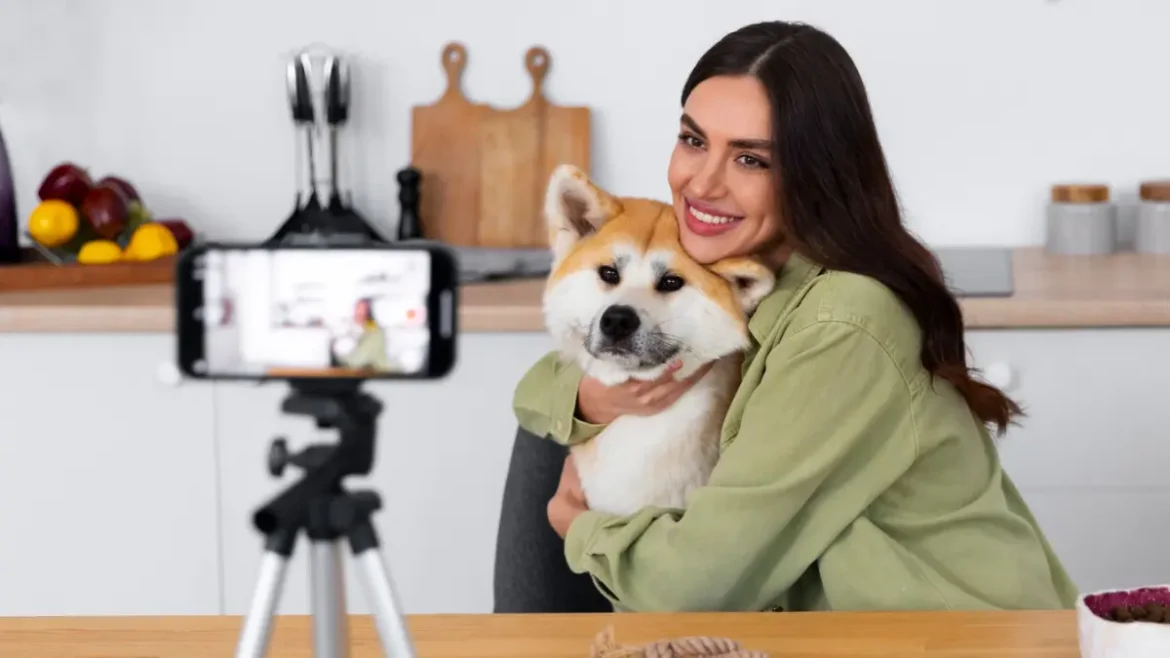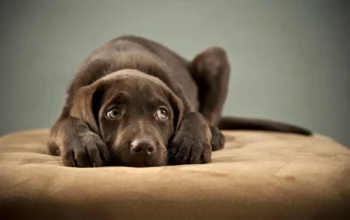Once upon a time, pets were just pets. They ate, slept, played, begged for treats and stared at us while we tried to enjoy a quiet meal. Now?
They’re building brands. Signing paid partnerships. Making more money than some humans.
Some even have agents, merchandise lines and sponsorship calendars.
Welcome to the age of pet influencers.
But before you get excited and start imagining your dog rocking sunglasses while negotiating brand deals, we need to slow down and ask some real questions. What actually makes a pet influencer? Why did this trend explode? And more importantly, can your pet realistically join that world?
Let’s unpack all of it.
1. Why Pet Influencers Became a Massive Trend
Pet influencers didn’t just happen overnight. It’s the result of several cultural shifts that all collided.
People trust animals more than people
Strange but true. Pets don’t lie. They don’t pretend. They don’t push agendas. They’re pure, genuine and easy to love. With humans becoming more skeptical of regular influencers, cute animals feel like a breath of fresh air.
Everyone needs a serotonin boost
Scrolling social media can feel like entering a battlefield. But then a cat wearing a tiny raincoat pops up. Suddenly the world makes sense again. That emotional relief is valuable.
Brands realized pets move product
Dog food companies, toy brands, tech brands, even banks now use pets in ads. Why? Because engagement skyrockets. If a human model gets a thousand likes, a Labrador puppy in sunglasses might get fifty thousand.
Low barrier to entry
You don’t need perfect makeup, a gym body or high end fashion. You just need a pet with personality and a camera.
But here’s where it gets interesting. Not every pet with a cute face becomes an influencer. If that were true, every other cat would already be famous. So what actually separates the stars from the scroll-past profiles?
Let’s break that open.
2. The Traits That Make a Pet Influencer Stand Out
Before asking “Can my pet do this?” you need to be honest about who your pet really is.
This is where many owners get it wrong. They assume their pet is “naturally cute,” but cuteness alone doesn’t build a following. If it did, the internet would have billions of pet influencers by now.
Here’s what actually matters.
A unique look or vibe
Not necessarily rare. Just distinctive.
Examples:
• A cat with dramatic eyebrows
• A dog with mismatched eyes
• A rabbit with permanently grumpy expressions
• A parrot that acts like a comedian
• A hairless guinea pig that looks like a tiny bodybuilder
It’s about recognizability. When people see your pet, they should instantly say, “Oh, that’s that one from Instagram!”
A consistent personality on camera
Some pets are natural performers. Some are shy. Some are wild. Some are chill.
Any personality can work, but it has to be consistent enough to create a theme.
Because here’s the truth: pet influencing is storytelling, not randomness.
Comfort with the camera
You can’t force this.
If your dog bolts the moment you pull out your phone, or your cat acts like you owe them rent whenever you try to record them, influencing might be a struggle.
Owner creativity and consistency
This is the one owners underestimate. A pet influencer is 50 percent pet, 50 percent owner. Your pet may be adorable, but if you can’t create interesting content, it won’t click.
Ask yourself:
Do you have ideas? Can you edit videos? Do you enjoy storytelling? Will you show up consistently?
If not, your pet won’t grow.
3. The Truth Most People Ignore: Your Pet Doesn’t Need to Be Perfect
Many owners believe pet influencers need stunning photos, perfect lighting or professional poses. Not true.
Some of the biggest pet accounts thrive because of quirks, not perfection. Think of famous “ugly cute” dogs. Think of cats with questionable attitudes. Think of parrots that insult their owners on camera.
Authenticity wins.
But here’s a challenge. What “story” is your pet actually telling?
Most people can’t answer that. They just assume the story will appear on its own. It won’t.
Your pet needs a hook.
For example:
• A dog who travels everywhere
• A cat with savage reactions
• A rabbit who does ASMR munching
• A turtle who “reviews” plants
• A ferret with chaotic zoomies
• A dancing cockatoo
Once you figure out your angle, content becomes easier.
4. What Type of Content Actually Works for Pet Influencers?
Let’s get practical. Because this is where you need clarity.
Pet content that performs well usually falls into these categories:
1. Humor
Funny reactions, dramatic behavior, chaotic moments.
Pets doing things that make humans say “Same.”
2. Relatable everyday life
Morning routines, bedtime routines, mealtime chaos.
3. Educational content
Training tips, health advice, grooming routines.
4. Emotion based content
Rescue stories. Glow ups. Before and after transformations.
5. Niche talent videos
A dog that skateboards? Viral.
A cat opening doors? Viral.
A bird dancing on beat? Viral.
6. Trend-based content
Using trending audio, TikTok formats or memes.
But here’s the twist most owners don’t consider. Consistency beats creativity.
You can post a brilliant video once, but if you disappear for two weeks, your momentum dies.
5. How Platforms Respond Differently to Pet Content
Not all social platforms treat pet content equally.
Here’s the breakdown:
TikTok
Great for fast growth, playful videos and trends.
Highly competitive, but pets often go viral here.
Best for aesthetic shots, reels and brand partnerships.
Pet influencers make the most money here.
YouTube
Long form storytelling thrives.
Training videos, daily routines and vlogs can blow up.
Older, but still powerful for heartwarming stories and rescue content.
Rarely considered, but pet photography performs surprisingly well.
If you want your pet to truly grow, you shouldn’t rely on one platform.
6. The Business Side: How Pet Influencers Make Money
Let’s be honest. Many people want their pet to become an influencer because the earnings can get crazy.
Here are the main income streams:
1. Brand deals
Pet food brands
Pet toy companies
Pet clothing
Pet insurance
Grooming companies
Lifestyle brands
Many pay very well.
2. Affiliate links
You earn when people buy products you recommend.
3. Merchandise
Stickers, shirts, calendars, mugs featuring your pet.
4. Viral content bonuses
TikTok, Instagram and YouTube pay creators for views.
5. Licensing
Your pet’s image or videos get purchased for ads or TV.
6. Appearances
Pet expos, brand shoots, events.
But here’s the part pet owners don’t ask themselves enough:
Are you ready for the work behind monetizing your pet?
Because the moment money enters the chat, this becomes a small business.
Don’t underestimate that.
7. The Ethical Question: Should Your Pet Become an Influencer?
Not every pet is cut out for the job.
Some pets love the camera. Some tolerate it. Some hate it.
The worst thing you can do is force a pet into content creation.
You’ll see signs of stress:
• Drooping body language
• Moving away from the camera
• Sudden hiding behavior
• Excessive yawning
• Flattened ears
• Tail tucked
• Loss of appetite
• Grooming excessively
Your pet’s comfort must come first.
Influencing isn’t worth it if the pet is miserable.
Here’s a question you need to ask honestly:
Does my pet truly enjoy interaction, or am I projecting excitement onto them?
You’d be surprised how many pet owners assume their pet loves it when the animal is clearly stressed.
8. Step by Step: How to Actually Start Your Pet’s Influencer Journey
If you decide to go for it, here’s a realistic roadmap.
Step 1: Find your pet’s angle
Funny? Cute? Chaotic? Educational? Something unique.
Step 2: Pick a platform to begin with
TikTok or Instagram are usually best for starters.
Step 3: Create a posting schedule
Three to five times a week is a good entry point.
Step 4: Study successful pet accounts
Not to copy them, but to understand patterns.
Step 5: Use good lighting and clean backgrounds
You don’t need fancy equipment.
Step 6: Keep videos short and engaging
Especially at the start.
Step 7: Build a personality around your pet
Think of it like a brand identity.
Step 8: Engage with followers
People follow pets, but they talk to owners.
Step 9: Track what works and refine
If funny content works, do more of it.
If educational content fails, switch strategies.
Step 10: Stay patient
Growth is slow at first, then explosive.
9. Mistakes That Stop Pet Accounts From Growing
If you want to avoid disappointment, stay aware of these common mistakes.
1. Inconsistency
Posting once a month won’t cut it.
2. No theme
Random content confuses the audience.
3. Over editing
Sometimes raw videos perform better.
4. Ignoring trends
You’re competing with millions. Don’t make it harder.
5. Forcing the pet
People can tell when a pet is uncomfortable.
6. Not being social
Comment on other pet pages. Collaborate where possible.
7. Expecting fame instantly
Even viral pets took months or years to grow.
10. So Can Your Pet Become a Pet Influencer?
Here’s the honest truth.
Probably yes, but not automatically.
The real question isn’t “Is my pet cute?”
It’s:
• Does my pet enjoy attention?
• Do they have something unique?
• Am I willing to put in the work?
• Can I stay consistent?
• Do I understand social trends?
• Can I tell stories?
If you can answer yes to at least three of these, you have a shot.
And even if your pet never becomes “famous,” you’ll still end up with fun memories, creative content and a deeper bond with them.
Final Thoughts: The Pet Influencer World Is Big, Wild and Full of Possibilities
The rise of pet influencers isn’t slowing down. As long as humans crave joy, comfort and soft-hearted content, pets will keep stealing the spotlight.
You just need to figure out where your pet fits in.
What story they bring to the table.
And whether you’re ready to help them shine.
So let me ask you this..
What would you say is your pet’s strongest “influencer” quality right now, and what angle do you think would set them apart from other pets?



